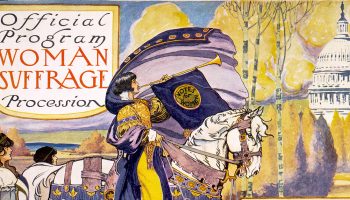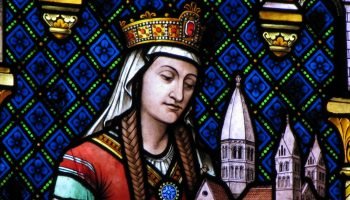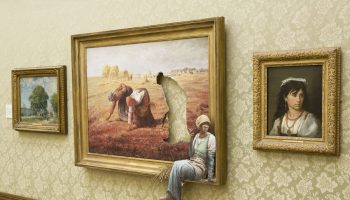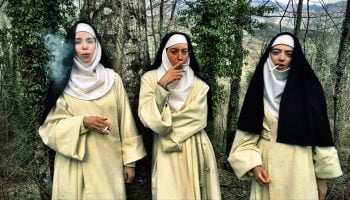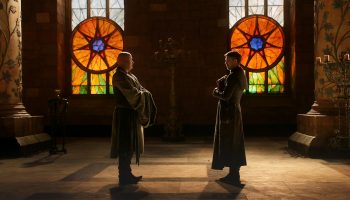This is part 3 of The Public Medievalist‘s special series: Gender, Sexism, and the Middle Ages, by Gabrielle Bychowski. You can find the other parts of our series here.
Yes.
Sorry, did you need more than that?
Having to ask and answer this question is a bit absurd. There is a mountain of evidence—one that is growing every day—that being transgender is not a “lifestyle choice,” as some might have you believe, but simply part of the biodiversity of the human species. According to a 2016 Williams Institute study, trans-identified persons make up 0.6% of adults. Likewise, according to the Intersex Society of North America, 1 in 2,000 people are born with some intersex condition.
More and more, we are learning that the human species is not now and has never been limited to two types of genders, two types of cultures, two types of brains, or two types of bodies. While those proportions are rather small, projected over the large numbers that make up the current populations of all those who live today— and all those who have ever lived— transgender and intersex people should be recognized as a significant and valuable part of human history. Indeed, as society allows for more trans and intersex people to safely identify to the public, these numbers are increasing every day.
For those who consider transgender identity merely to be a lifestyle choice, the claim that trans people existed in the Middle Ages is like saying that punk rock or Star Wars fandom existed in the Middle Ages. This may lead to some ill-informed, but maybe understandable questions:
- How could trans people possibly exist without the specific language, communities, and technologies that exist today?
- How could transgender people possibly exist before someone decided to call them transgender?
- How could transgender people possibly exist before doctors “discovered” them and diagnosed them?
- How could transgender people possibly exist before they were able to engage with one another publicly?
- How could transgender people possibly exist before contemporary innovations to technologies that allow them to transition, such as modern surgery or hormone replace therapy?
Similar arguments have been made time and again against investigating queerness (particularly gay men and lesbian women) in the Middle Ages: claiming that looking for queer or trans folk in the past is anachronistic. The tacit hope seems to be that gayness or trans-ness are not an inextricable part of humanity or gender diversity. This makes it possible to fantasize about going back in time to when “men were men” and “women were women”—or conversely that we might move forward in time to an era in which trans-ness and queerness are eradicated. Again, you can easily imagine people waxing nostalgic about a time before punk rock, or people desperately awaiting the time that super-hero fatigue does away with all these annoyingly formulaic movies.
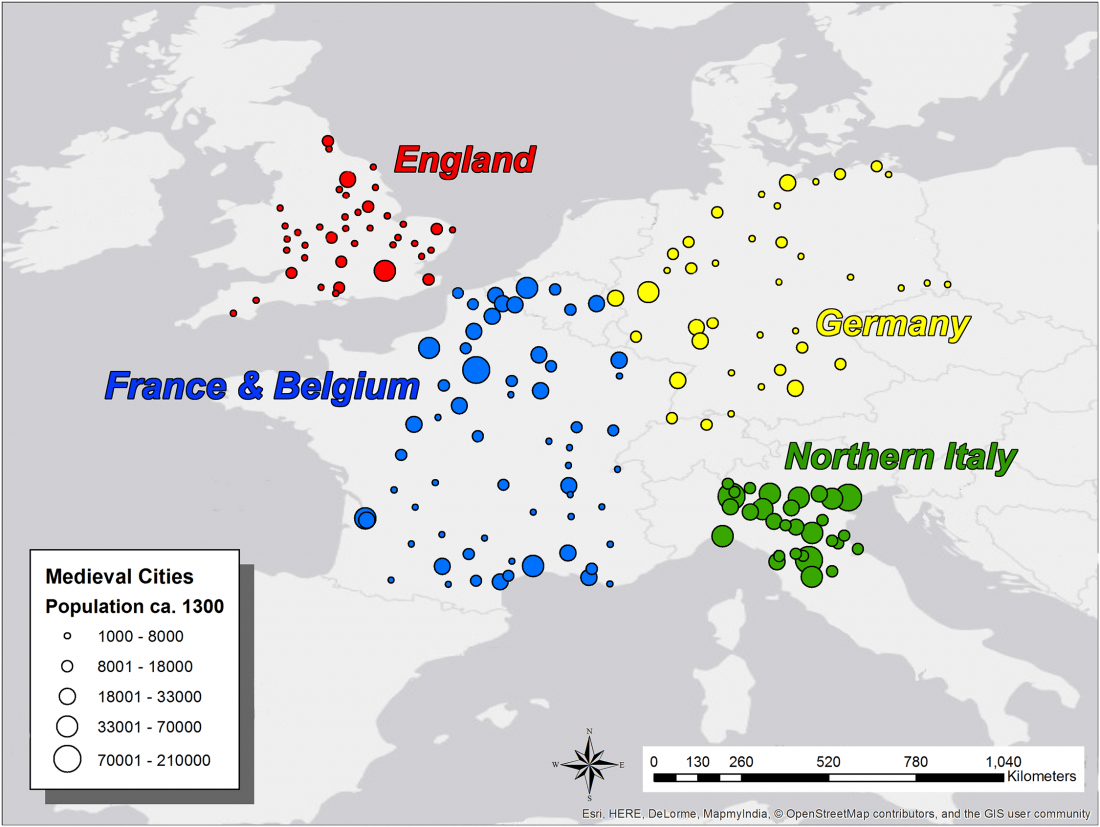
But contrary to these retrograde fantasies, transgender people are not going away, and there is no time to retreat to where they did not exist. In fact, based on the numbers in the studies above, you can roughly estimate the number of medieval people who may have embodied trans or intersex traits in the Middle Ages. For example, one demographer of medieval Europe estimated that there were 19 million people living in France and the Low Countries (now the Netherlands and Belgium) in 1340. If approximately 0.6% of adults are trans, and 1/2000 of adults are intersex, that gives us a figure of about 114,000 trans people, and 9,500 intersex people living in 14th century France.
That’s a lot of people. Proportionally, it would have been relatively small—but not insignificant. It would certainly have been significant for those people’s experiences in the past, and definitely significant enough not to ignore or erase them in the present.
Gender Dysphoria in the Middle Ages
So, how could trans people exist without the specific language, communities, and technologies that are today allowing transgender people to become articulated in a socially noticeable way? It requires a bit of explanation, because they require us to learn a lot about transgender people and a lot about medieval people.
It is difficult to get a sense of the internal psychology of persons within medieval texts. But the short definition of gender dysphoria within the Diagnostic and Statistical Manual of Mental Disorders Fifth Edition (DSM-5) describes a pattern which does not require a significant degree of penetration into a person’s internal life:
there must be a marked difference between the individual’s expressed / experienced gender and the gender others would assign him or her, and it must continue for at least six months. (DSM-5)
This short diagnosis reveals that the conflict described is more external than internal, more primarily a social conflict than a psychological one. Granted, the longer form of the diagnosis in the DSM-5 goes on at length about the various associated psychological effects and patterns, but the short version puts the emphasis on a “self/society” problem. Society designates a gender for the person; the person’s expressed or experienced gender contradicts that designation. Furthermore, the DSM-5 stresses that there be a “marked” difference. Meaning, there needs to be signs that a reader (e.g. a psychologist or historian) could see for the pattern of gender dysphoria. One such case in medieval Europe is that of Eleanor Rykener.
Gender Dysphoria and Eleanor Rykener
The medieval court case of Eleanor Rykener shows a legal system that is trying to square a person who lives as a woman, and calls herself Eleanor, with other information that leads the court to identify Eleanor as a man named John. In the testimony of this late 14th century London trial, Eleanor is brought into the courts on accusations of sexual misconduct—she was caught in the act performing sex work. However, sex work was often tolerated in London at this time; the problem is not the sex work. The problem is that the court does not know whether or not sodomy was committed.
The court does not know, or rather cannot decide, because they cannot decide whether or not Eleanor is a man or a woman. She gives her name as Eleanor, and presents as a woman to the courts. But after interrogation, she is forced to confess that she once lived in London as a man named John. She tells the story of her transition, and her new work as a seamstress and sex worker. She discusses sleeping with both men and women—from aristocrats to nuns and priests—some of whom offered her pay or presents.
In the end, a verdict is not recorded. Indeed, while the text records both the names “Eleanor” and “John,” it is written in Latin, which allowed for the proceedings to continue without the male or female pronouns frequently required by English or French. The court, it seems, did not want to decide on a pronoun because they were still trying to decide what gender to consider Eleanor. Thus, history is left with a record of a trans woman, and also a record of the conflict which is textbook gender dysphoria: a marked difference between the individual’s expressed/experienced gender, and the gender others would assign to him or her.
Transitioning in the Middle Ages
If it walks like a duck, and talks like a duck, it’s probably a duck. This recognition of patterns is important to scholars of the past as we try to make sense of our fragmentary and foreign pasts. When meanings are ambiguous, looking at how things, or people, function in their environment can help. This is true for transgender people today and in the past. Even as trans people may be separated by time and space, language and culture, they can learn a lot from one another through the technologies that they share to live their lives. Whether one calls themselves transgender, non-binary, gender queer, gender fluid, or a drag queen, one can learn from other people who have developed tools and strategies for gender transitioning. Indeed, if you trace the histories of these technologies and tactics, a trans history of gender transitioning is revealed without needing to make definitive claims about the specific people using them.
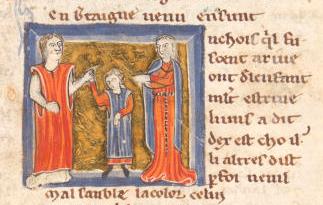
One of the technologies that facilitates gender transitioning—both now and in the Middle Ages—is clothing. Clothing is profoundly gendered in our society as well as past societies. For example, medieval men often used armor and swords to physically and socially construct their gender. These allowed them to physically engage in certain forms of masculine society (i.e. taking a hit from a lance), or to socially perform certain tropes of masculinity (i.e. courtly romance). A clear example of this is in the medieval chivalric story, the Roman de Silence. For those of you unfamiliar with it, Silence tells the story of a heroic person who is born female and assigned female by “Nature” but who decides to live as a man after consultation with the forces of “Nurture” and “Reason.” He then is raised as a knight, is trained as a minstrel, and has several heroic adventures. It deserves its own article, but suffice it to say, dressing as a man was an essential part to Silence being not just a man, but an exemplary one.
Transgender Medieval Monks
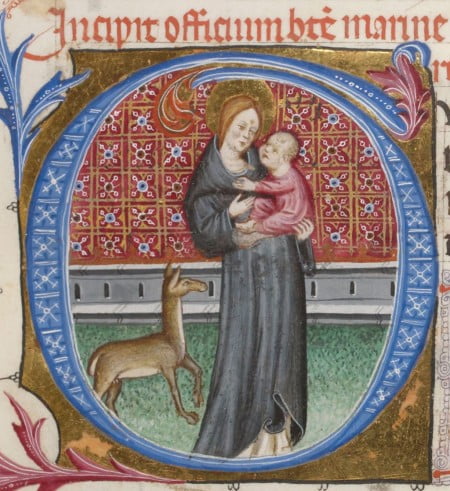
Likewise, some medieval people used habits—meaning monk’s or nun’s habits—to physically affect their bodies (e.g. by covering it from sight) and to perform social affects (e.g. modesty). A historical example of habits being used for gender transition comes to us through the story of the Life of St. Marinos the Monk. Marinos is an early Christian figure, who has been canonized both in the Roman Catholic and the Eastern Orthodox Churches. According to tradition, passed down through story, relics, and shrines, Marinos was assigned female at birth but chose to enter a monastery and live as a monk.
As he was contemplating his transition, his father warned him that his body (especially his genitals) would get him in trouble. Yet Marinos responded to this concern by putting on a monk’s habit, which not only covered over his genitals with clothing but covered over any sort of reproductive sexual life with the veil of celibacy. After all, if monks were to be modest and abstain from sexual encounters, what difference did it make what form of genitals he had under his habit? Funny enough, Marinos was ejected from the monastery for a time; he was kicked out not because he had a vagina (this was only discovered after his death) but because it was believed that he possessed a penis—and that he used it to impregnate a local girl. In fact, after the child was born, Marinos was given the boy to raise as his own. At this point, if Marinos’s clothing was merely a disguise, it had long since lost its usefulness. If his identity as a monk, and as a man was not so important, then Marinos could have easily taken off his habit and revealed his genitals to demonstrate his innocence. Yet Marinos held onto his monk’s habit and male identity. He took on the additional role of father, until eventually he was allowed back into the monastery along with his adopted son. In the end, Marinos remained a man, monk, and father until his death all because of the clothing which had allowed him to transition, and which he would not surrender even in moments of danger.
Transphobia in the Middle Ages
When history presents us with a lack of marginalized voices, we should ask: what has compelled this silence? This applies to transgender people in the Middle Ages. At times, we may wish that certain historical figures or historians could say more that would confirm what we want to hear about transgender life in the Middle Ages. Yet, when our desires are met with silence or deflection in the sources, we can nonetheless turn our attentions to the social conditions that would compel this silence. We can ask: what does transphobia look like in our histories? Furthermore, how might transphobic historians have added—or currently be adding—to the erasure of trans voices?
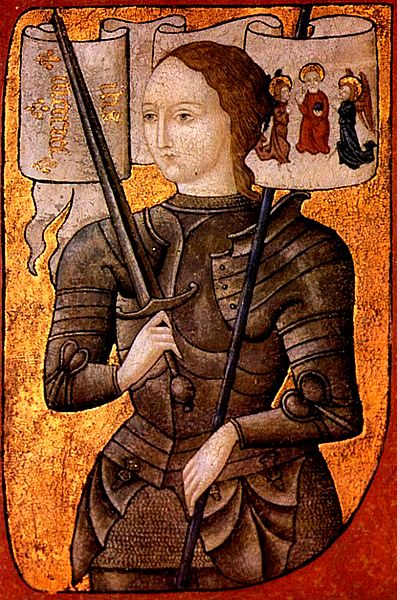
Ironically, you can sometimes discern the unarticulated presence of transgender life by the articulated presence of transphobia. Take, for instance, the case of St. Joan of Arc. Made famous for taking on men’s clothing and doing battle with the English during the Hundred Years’ War, Joan was eventually captured, interrogated, and killed. Interestingly, while Joan was seized by the English for being a warrior and leader of the French forces, this is not why Joan was killed. The Trial and Interrogation of Joan of Arc focuses less on Joan’s military exploits against the English government and more on Joan’s gender. It is heresy, claimed the English, for a woman to wear men’s clothing. They accused Joan of being a witch or a heretic because Joan’s masculine presentation seemed to defy their biased understanding of scripture. In the end, after many exchanges back and forth, and after refusing to eschew men’s clothing once and for all—or to condemn the wearing of men’s clothing—Joan was burned to death.
Some would debate passionately over whether or not Joan of Arc was transgender in the same way that modern trans men in the military understand themselves to be. For many, this is because Joan is often held up as evidence that “women can do a man’s job.” On one hand, Joan regularly self-identifies as a “maid.” But Joan spoke very carefully in the trial; Joan’s actions and carefully chosen words make it debatable whether Joan, if alive today, might identify as trans or perhaps even non-binary. But that is complicated enough to be the subject of its own article.
It is enough to say for now that Joan may not have had much liberty to speak candidly about gender and identity. The whole focus on the trial was trying to catch Joan making an unorthodox or heretical claim. Whether or not you accept that Joan of Arc might have been trans, it is clear that transphobia was central to Joan’s trial. The argument being made by the English court was, essentially, that a person cannot and should not be transgender. Joan refused to confirm all the English’s transphobic biases. Joan was ultimately killed on these grounds. This suggests that whether or not modern historians call Joan of Arc transgender, it seems as though the medieval court considered Joan transgender enough to die for it.
Conclusion
For much of the public, the short answer to whether or not transgender people existed in the Middle Ages is sufficient to affirm or annoy their preexisting biases towards transgender people today. For those who deny that transgender is anything more than a post-modern lifestyle, any answer beyond “no” might be dismissed as a bias of a supposed “transgender agenda.” For those who affirm transgender as an essential part of human diversity, the answer “yes” is taken as obvious.
Yet, the longer answer—one that focuses on “how” medieval transgender lives existed, is far more interesting to me than “whether” medieval transgender people existed. Because the “how” of medieval transgender life is as vast and diverse as its modern counterpart. It is full of those cultural genealogies that inform human culture and expression today. And it is riven with the battle grounds between self and society, body and culture, that seem to be bottomless wells of philosophical insights and debates.
If you enjoyed that article, please share it with your history-loving friends on Facebook, or on Twitter! And be sure to subscribe here to receive every new article from The Public Medievalist the moment it launches.
